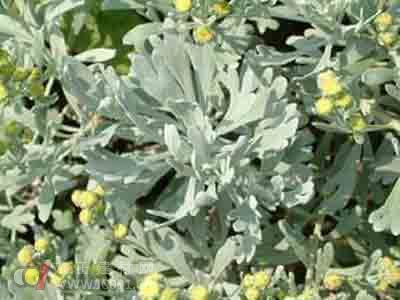Potted fragrant chrysanthemum (Fullet daisy) maintenance points: (1) Upper pot : Xiangju is usually planted with cutting seedlings which are initially formed in 2~3 years old, and should be purchased from March to April. If you want to breed small seedlings, you can buy seeds for spring sowing. The upper basin can be used with purple sand pots, hexagonal pots or rectangular pots. The potting soil is made up of garden soil, manure and sand according to 6:1:3, and is in the basin from late March to early April. The bottom of the basin is filled with green yarn. Xiangju is afraid of water accumulation. The bottom of the basin should be placed with a layer of coarse carbon residue or broken tiles as the drainage layer. Put the decomposed cake fertilizer or the hoof as the base fertilizer. After planting, the water will be poured. The next day, the roots will be poured again to make the roots closely connect with the soil. . (2) Plastic trimming : Potted chrysanthemum can be turned into a natural shape, the clouds are layered, and the curved shape is generally 3~4 main branches, divided into 3~4 layers, the lower layer is larger, the upper layer is smaller, the most The lower branch can also be made into a relatively long floating branch, hanging over the lower part of the basin. Plastic surgery should be carried out in the slow growth period from March to April and from August to September. The gerbera branches are fine and brittle. Care should be taken when shaping and the force should not be too strong. In the growing season, Xiangju should attach great importance to pruning and picking the heart, and timely remove the dense branches, long branches and cross branches. In mid-May, the fresh shoots will be 2~4 cm short when they grow to 8~10 cm. Between the branches, the extra branches between the upper and lower layers, and then placed in a sunny place, after 10 to 20 days, the young shoots re-emerge, the new silver-gray leaves are very beautiful. With the growth of the new shoots, the old leaves of the base will gradually die, and the old leaves should be wiped off before the germination and after the short cut. In the middle and late July, if the new shoots grow vigorously, they can be topped 1 or 2 times. (3) Fertilizer and water management : Xiangju Xixixi Fertilizer, fertilization should be mastered after the first thin and thick, the amount of small duty and the rational cooperation of nitrogen, phosphorus and potassium. In the growing season, every 10 to 15 days, the cake fertilizer water should be applied once, in the late growth stage and after the flowering period, the phosphorus and potassium fertilizer should be applied, and 0.2% urea and 0.1% potassium dihydrogen phosphate can be sprayed on the foliage. Use organic fertilizer must be decomposed, high temperature weather should stop fertilizer or apply a small amount of inorganic fertilizer. Potted chrysanthemums are changed once every 2 years. In autumn or when changing pots, base fertilizer should be applied. Generally, decomposed cake fertilizer or manure is used, 20~100 grams per pot. Xiangju watering is more strict, and it needs to be timely, timely, appropriate, and thoroughly poured. Watering according to the growth, temperature and humidity, watering once a day or every other day in spring and autumn, watering once in the morning and evening in the summer, and watering once in the winter 7~10 days. Watering should be timely and there should be no wilting and dehydration. The amount of water to be planted should be considered in different stages of growth and development. Different climate changes should be watered in moderation. The flowering period should maintain a certain humidity of the soil, which is conducive to seeding and avoiding watering. Xiangju is most afraid of water, and the potholes should be inspected before the rainy season. After the rain, the water should be poured in time. (4) Pest Control : Chrysanthemum has strong disease resistance and less pests and diseases. Common leaf black spots or brown spot, powdery mildew, mites, red spiders, scale insects and leaf-eating pests should be inspected and controlled in time. The spot disease can be treated with 50% carbendazim or 75% chlorothalonil 800~1000 times, and powdery mildew can be controlled 1000 times with triadimefon. Xiangju's aphids are heavier, and once found, it is necessary to spray 1000 times of imipenem in time. In the larval stage, the scale insects are sprayed 2 times 3 times with a 40% speed killing at 1000%. Red spiders were treated with 15% broom emulsifiable concentrate 2000 times. Corn Holder,Corn Needle,Yellow BBQ Corn Holder Coffee Accessories Co., Ltd. , http://www.fjbackpacks.com